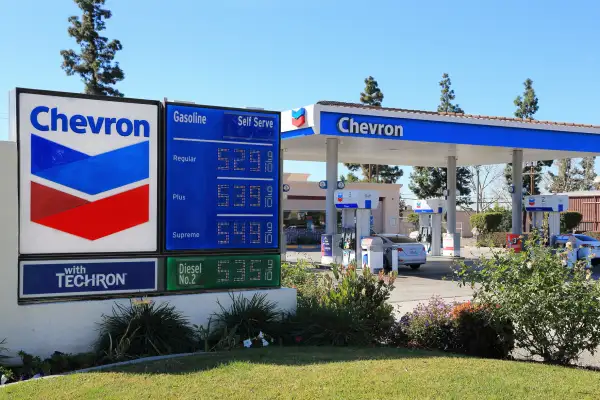$4 Gas Is Coming to Your State, and Prices Could Hit $5 by Summer

High gas prices have been frustrating American drivers for months — and now, the war in Ukraine is pushing oil and gas costs into a new gear.
As of Monday, a gallon of regular gasoline cost an average of $3.61 nationally, an increase of 8 cents in one week and 90 cents over the past year. Average gas prices recently crossed the $4 mark in Nevada, Oregon and Washington, according to AAA. New York, Illinois, Arizona and Alaska — where gas prices have all inched up over $3.80 — appear to be next.
For people in a couple states, $4 gas is old news. Drivers in Hawaii are paying an average of $4.57 per gallon, which is just a few pennies off the state's all-time high of $4.61, set in 2012. Experts anticipate that $5 gas could be typical in Hawaii by Memorial Day.
In California, gas prices reached a new record high last month and keep creeping upward, hitting an average of $4.84 a gallon Tuesday. Many gas stations throughout the state are already charging over $5 per gallon.
Why are gas prices so high?
Gas prices vary widely from state to state because of different taxes and regulations, as well as the local cost of doing business. According to the U.S. Energy Information Administration, 56% of the cost of consumer gasoline is based just on the price of wholesale crude oil. As you may have heard, supply chain problems and spiking demand caused those prices to surge even before the Russian invasion of Ukraine pushed global oil prices higher still.
“Russia’s invasion and the responding escalating series of financial sanctions by the U.S. and its allies have given the global oil market the jitters,” Andrew Gross, AAA spokesperson, said in a news release.
Patrick De Haan, head of petroleum analysis at the gas price-tracking app GasBuddy, said in a Monday blog post that the Russia-Ukraine "situation could worsen at any time, keeping gas prices elevated for the foreseeable future.”
Other forces unrelated to international tensions and supply chain problems could cause gas prices to climb in the months ahead, as well. "We’re also entering the time of year that seasonality pushes gasoline prices up by anywhere from 25 to 75 cents by Memorial Day," De Haan explained. "It’s simply looking like a perfect storm for motorists at the pump, with little to no relief anytime soon.”
Higher costs are likely to spread well beyond gas stations. Diesel fuel now costs an average of $4.10 per gallon, up $1.03 compared to this time last year. Because most trucks and cargo ships run on diesel, shipping costs are increasing for a vast number of businesses and services.
This all translates to rising inflation for a vast variety of goods, from food to building supplies, coming at a time when inflation is already at a 40-year high.
More from Money:
What the Russia Sanctions Could Mean for Inflation in the U.S.
Abnormally High Heating Bills Are Outraging People Across the Country
The Russia-Ukraine Conflict Is Rattling the Stock Market. Here's What Investors Should Do Now
